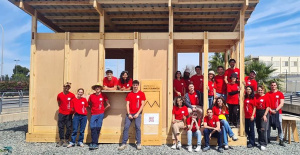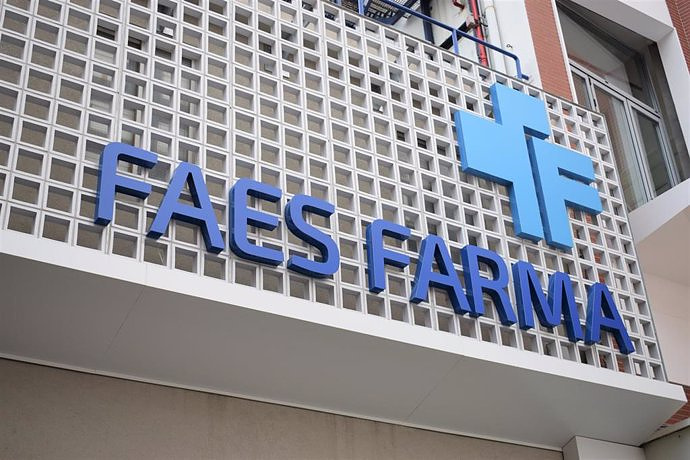VALENCIA, 24 Aug. (EUROPA PRESS) -
A team from the Polytechnic University of Valencia (UPV) is working on the development of new biodegradable materials that guarantee the preservation of food and extend its useful life, as an alternative to traditional plastic containers. Among their results in the laboratory, they have developed biodegradable films for the preservation of pork meat and single-dose bags of sunflower oil made with extracts of rice straw.
From the academic institution they emphasize that the food packaging sector is one of the largest consumers of non-degradable plastic; Its use makes it possible to guarantee the correct conservation of food, extend its useful life and reduce losses throughout the food chain. But, they also cause "an important problem of environmental pollution."
To face this challenge, in addition to promoting responsible consumption and recycling, a solution is to replace conventional plastic containers with biodegradable materials, which can be composted together with food waste. In addition, the incorporation of active compounds in the packaging material can provide it with additional properties, such as a high antioxidant and/or antimicrobial capacity. And this favors, precisely, that packaged foods are better preserved and their useful life is longer, reducing the environmental impact of traditional packaging.
Within this field, a team from the Institute of Food Engineering for Development of the UPV, led by Dr. Amparo Chiralt, is studying how different compounds of natural origin, with proven antioxidant and antimicrobial activity, can be incorporated into biodegradable polymer matrices with hydrophilic (such as starch) and hydrophobic (such as biodegradable polyesters) nature to obtain active materials for packaging. To ensure the preservative function of the material, these compounds must be released into the food in a controlled manner, acting against potentially present microorganisms or interfering with oxidative processes.
The UPV research group is using phenolic acids, present in many vegetables, with antimicrobial, antioxidant and other health-promoting activities, in the design of active biodegradable materials for food packaging. In their studies, they have verified that the type of polymer (hydrophilic or hydrophobic) significantly affects the release and effectiveness of active compounds in contact with aqueous foods, which are the most sensitive to microbial spoilage.
They have also verified that biodegradable polyesters, with low affinity with water, do not effectively release the active compounds; and that hydrophilic polymers release active compounds effectively, when hydrated with food contact, but, with hydration, they lose adequate barrier capacity and mechanical resistance.
Obtaining biodegradable multilayer films with an active layer for food contact is a solution to promote sustainable and ecological food packaging, combining hydrophilic and hydrophobic biopolymers. Different works by the group show the effectiveness of laminating biodegradable films with complementary properties, with phenolic acids or plant extracts rich in these compounds, with high antioxidant and antimicrobial capacity.
Among other results, the materials developed from the UPV laboratories have made it possible to extend the useful life of the pork packaged in these laminates, with a high level of conservation of quality parameters and microbiological safety. They have also developed single-dose bags with active extracts obtained from rice straw for packaging unsaturated oils, such as sunflower oil, which allow them to be protected from oxidative processes.
These results "demonstrate that biodegradable polymers have a high potential for obtaining sustainable and ecological solutions for food packaging, also using agri-food waste as a source of active compounds or reinforcing materials (celluloses) to improve their functionality and competitiveness in the market", emphasize those responsible for the work.
However, he points out, a "great pending challenge" is increasing its production and reducing the cost, and adapting its properties to the requirements of food packaging, which are very different for the different types of food, depending on its composition and sensitivity to deterioration.

 Exploring Cardano: Inner Workings and Advantages of this Cryptocurrency
Exploring Cardano: Inner Workings and Advantages of this Cryptocurrency Seville.- Economy.- Innova.- STSA inaugurates its new painting and sealing hangar in San Pablo, for 18 million
Seville.- Economy.- Innova.- STSA inaugurates its new painting and sealing hangar in San Pablo, for 18 million Innova.- More than 300 volunteers join the Andalucía Compromiso Digital network in one month to facilitate access to ICT
Innova.- More than 300 volunteers join the Andalucía Compromiso Digital network in one month to facilitate access to ICT Innova.-AMP.- Ayesa acquires 51% of Sadiel, which will create new technological engineering products and expand markets
Innova.-AMP.- Ayesa acquires 51% of Sadiel, which will create new technological engineering products and expand markets The PP sees the concentration of support for Sánchez in Ferraz as a "failure" and believes that it "complicates" the story of its continuity
The PP sees the concentration of support for Sánchez in Ferraz as a "failure" and believes that it "complicates" the story of its continuity Marc Márquez returns to pole in Jerez
Marc Márquez returns to pole in Jerez The CIS carries out a quick survey on Sánchez's letter to measure the reaction of citizens
The CIS carries out a quick survey on Sánchez's letter to measure the reaction of citizens 12M.- Puigdemont to Sánchez and Illa: "This is not about the future of the PSOE! What have you believed?"
12M.- Puigdemont to Sánchez and Illa: "This is not about the future of the PSOE! What have you believed?" How Blockchain in being used to shape the future
How Blockchain in being used to shape the future Not just BTC and ETH: Here Are Some More Interesting Coins Worth Focusing on
Not just BTC and ETH: Here Are Some More Interesting Coins Worth Focusing on UPV students build a prototype of a wooden house to move to Equatorial Guinea
UPV students build a prototype of a wooden house to move to Equatorial Guinea The UA opens the call for the Impulso 2024 Awards for the best innovative business initiatives
The UA opens the call for the Impulso 2024 Awards for the best innovative business initiatives ALI, virtual assistant from Alicante, internationally recognized by the OECD
ALI, virtual assistant from Alicante, internationally recognized by the OECD Retrópolis brings the golden age of video games and computing to the UPV
Retrópolis brings the golden age of video games and computing to the UPV A million people demonstrate in France against Macron's pension reform
A million people demonstrate in France against Macron's pension reform Russia launches several missiles against "critical infrastructure" in the city of Zaporizhia
Russia launches several missiles against "critical infrastructure" in the city of Zaporizhia A "procession" remembers the dead of the Calabria shipwreck as bodies continue to wash up on the shore
A "procession" remembers the dead of the Calabria shipwreck as bodies continue to wash up on the shore Prison sentences handed down for three prominent Hong Kong pro-democracy activists
Prison sentences handed down for three prominent Hong Kong pro-democracy activists ETH continues to leave trading platforms, Ethereum balance on exchanges lowest in 3 years
ETH continues to leave trading platforms, Ethereum balance on exchanges lowest in 3 years Investors invest $450 million in Consensys, Ethereum incubator now valued at $7 billion
Investors invest $450 million in Consensys, Ethereum incubator now valued at $7 billion Alchemy Integrates Ethereum L2 Product Starknet to Enhance Web3 Scalability at a Price 100x Lower Than L1 Fees
Alchemy Integrates Ethereum L2 Product Starknet to Enhance Web3 Scalability at a Price 100x Lower Than L1 Fees Mining Report: Bitcoin's Electricity Consumption Declines by 25% in Q1 2022
Mining Report: Bitcoin's Electricity Consumption Declines by 25% in Q1 2022 Oil-to-Bitcoin Mining Firm Crusoe Energy Systems Raised $505 Million
Oil-to-Bitcoin Mining Firm Crusoe Energy Systems Raised $505 Million Microbt reveals the latest Bitcoin mining rigs -- Machines produce up to 126 TH/s with custom 5nm chip design
Microbt reveals the latest Bitcoin mining rigs -- Machines produce up to 126 TH/s with custom 5nm chip design Bitcoin's Mining Difficulty Hits a Lifetime High, With More Than 90% of BTC Supply Issued
Bitcoin's Mining Difficulty Hits a Lifetime High, With More Than 90% of BTC Supply Issued The Biggest Movers are Near, EOS, and RUNE during Friday's Selloff
The Biggest Movers are Near, EOS, and RUNE during Friday's Selloff Global Markets Spooked by a Hawkish Fed and Covid, Stocks and Crypto Gain After Musk Buys Twitter
Global Markets Spooked by a Hawkish Fed and Covid, Stocks and Crypto Gain After Musk Buys Twitter Bitso to offset carbon emissions from the Trading Platform's ERC20, ETH, and BTC Transactions
Bitso to offset carbon emissions from the Trading Platform's ERC20, ETH, and BTC Transactions Draftkings Announces 2022 College Hoops NFT Selection for March Madness
Draftkings Announces 2022 College Hoops NFT Selection for March Madness























